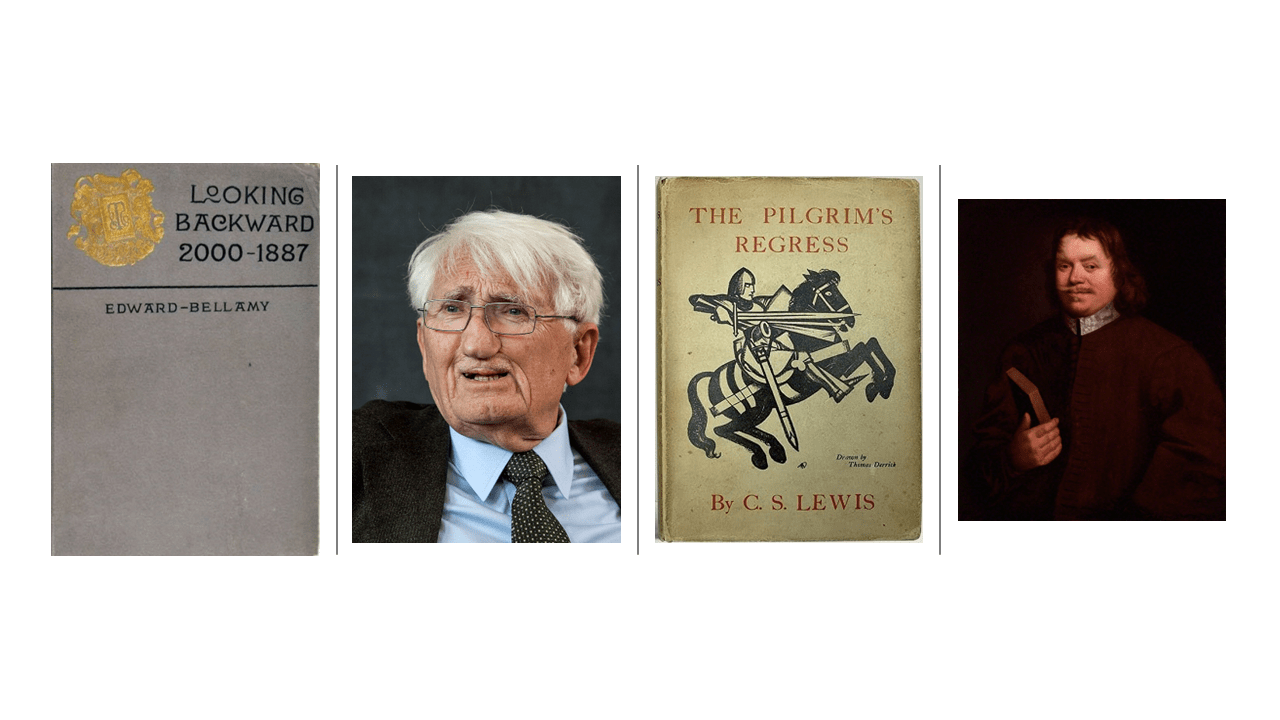I have been talking about critical theory in among many of my blog articles and posts, and I am concerned that concept needs to untangled truth from the criticisms of the Puritan world and John Bunyan’s idea of progressivism.
Here is a section of a definition from Wikipedia that sums up well what “Critical Theory” is:
Max Horkheimer first defined critical theory (German: Kritische Theorie) in his 1937 essay “Traditional and Critical Theory”, as a social theory oriented toward critiquing and changing society as a whole, in contrast to traditional theory oriented only toward understanding or explaining it. Wanting to distinguish critical theory as a radical, emancipatory form of Marxist philosophy, Horkheimer critiqued both the model of science put forward by logical positivism, and what he and his colleagues saw as the covert positivism and authoritarianism of orthodox Marxism and Communism. He described a theory as critical insofar as it seeks “to liberate human beings from the circumstances that enslave them”.[12] Critical theory involves a normative dimension, either by criticizing society in terms of some general theory of values or norms (oughts), or by criticizing society in terms of its own espoused values (i.e. immanent critique).[13] Significantly, critical theory not only conceptualizes and critiques societal power structures, but also establishes an empirically grounded model to link society to the human subject.[14] It defends the universalist ambitions of the tradition, but does so within a specific context of social-scientific and historical research.[14]
The core concepts of critical theory are that it should:
- be directed at the totality of society in its historical specificity (i.e., how it came to be configured at a specific point in time)
- improve understanding of society by integrating all the major social sciences, including geography, economics, sociology, history, political science, anthropology, and psychology
Postmodern critical theory is another major product of critical theory. It analyzes the fragmentation of cultural identities in order to challenge modernist-era constructs such as metanarratives, rationality, and universal truths, while politicizing social problems “by situating them in historical and cultural contexts, to implicate themselves in the process of collecting and analyzing data, and to relativize their findings”.[15]
The definitional section is the History section which, in my view, is why it is the clearest part of the Wikipedia entry. Please read the entry in full if you wish.
My own original contribution here is to explain the connection between understanding Critical Theory and the American Revivalist Tradition (ART). ART being, and beginning in, the original Puritan world. An example of the fact is:
The Pilgrim Progress is a reenactment of the procession to church for the 51 surviving Pilgrims of the first winter in 1621. The reenactment was instituted by the Town of Plymouth, Massachusetts in 1921 in honor of its Pilgrim founders. The march takes place on the first four Fridays in August and is an integral part of the Town’s celebration of Thanksgiving Day.
Immediately the intelligent reader is hit by the notion of progressive historiography. We march forward by looking back. For those who know their history of western literature, knows Looking Backward: 2000–1887 is a utopian science fiction novel by the American journalist and writer Edward Bellamy, first published in 1888. So, the Puritan Historiography is looking back to the sociology of a past Puritan society. As I explained in my 1995 doctoral thesis, ART then adopts this worldview as the ART historiography.
Then look at how Max Horkheimer defined ‘critical theory’ in Kritische Theorie, the 1937 essay, translated as Traditional and Critical Theory. There is a binary between tradition and modern (the corrective to the old utopian thinking) and/or postmodern (the new utopian thinking): “…as a social theory oriented toward critiquing and changing society as a whole, in contrast to traditional theory oriented only toward understanding or explaining it.” You can see the binary also in C.S. Lewis’ The Pilgrim’s Regress.
Contrary to “the idiocy of the idiocy” of the cultural-history warriors, and the many political players “who can’t get it,” there is no incompatibility in the thinking here. If you want a lifestyle which is “looking backward”, go ahead, but both modernity and postmodernity has clearly demonstrated, in someway, the rest of the world and society will move forward. This is a real problem for the bloody-minded and ideological-tight-ass thinking conservative; the adjectives excusing and separating-out my conservative friends from this particular criticism. One is always reminded of Miguel de Cervantes’ Don Quixote.
My ART history and the examination of the Puritan world explains the problem: the ART, or hard/fundamental ART world, has gone, except in the anti-intellectual margin. The contemporary Puritan world can only legitimately take their stand as anti-intellectualism, but with the intellect being both an ancient and modern virtue, there is no legitimation. And to understand, we must spiral back to critical theory and Jürgen Habermas.
Featured Images:
- Dust-jacket of Looking Backward by Edward Bellamy. Looking_Backward.jpg (350 × 511 pixels, file size: 72 KB, MIME type: image/jpeg).
- Jürgen Habermas, korunk egyik legismertebb szociológusa-filozófusa előadása alatt az ELTE- ÁJK VII. tantermében. Fotó: Európai Bizottság/Dudás Szabolcs 2014.05.29. Európa Pont – Habermas10.
- Book cover, The Pilgrim’s Regress written by C. S. Lewis. https://johnatkinsonbooks.co.uk/book/c-s-lewis-the-pilgrims-regress-first-edition-1933/
This is the front cover art for the book, The Pilgrim’s Regress written by C. S. Lewis. The book cover art copyright is believed to belong to the publisher, J.M. Dent and Sons, or the cover artist.
- Thomas Sadler, Portrait of John Bunyan (1628-1688) Edit this at Wikidata: https://commons.wikimedia.org/wiki/File:John_Bunyan_by_Thomas_Sadler_1684.jpg
Neville Buch
Latest posts by Neville Buch (see all)
- J. D. Vance’s Insult to America is to Propagandize American Modernism - July 26, 2024
- Why both the two majority Australian political parties get it wrong, and why Australia is following the United States into ‘Higher Education’ idiocy - July 23, 2024
- Populist Nationalism Will Not Deliver; We have been Here Before, many times… - July 20, 2024

